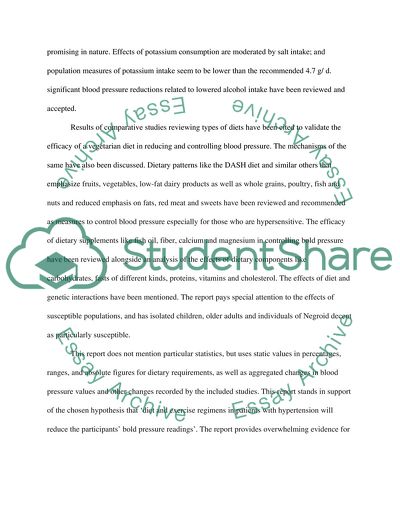Hypertension and diet/exercise2 Essay Example | Topics and Well Written Essays - 500 words. Retrieved from https://studentshare.org/statistics/1583129-hypertension-and-dietexercise2
Hypertension and diet/Exercise2 Essay Example | Topics and Well Written Essays - 500 Words. https://studentshare.org/statistics/1583129-hypertension-and-dietexercise2.


